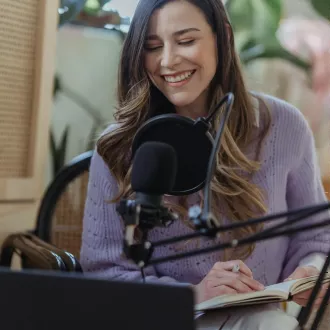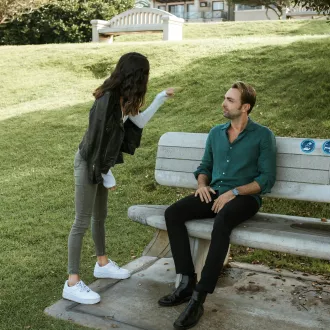Transcription Practical exercises to improve active and empathic listening.
Communication in a couple is one of the key elements to maintain a healthy and happy relationship. However, it is common that there are communication problems that generate conflicts and wear down the relationship. Active and empathic listening is an essential skill to improve communication in the couple, since it allows understanding the needs, desires and emotions of the other and promoting effective communication. The following are some practical exercises to improve active and empathic listening in the couple's relationship
Role play: In this exercise, different situations are simulated in which one of the partners communicates with the other. One of them assumes the role of the person who wants to communicate something and the other assumes the role of the person who listens. The objective is for the listener to practice active and empathic listening and to repeat in his or her own words what he or she has understood.
For example, one partner may say: "I had a very tiring day at work today, I feel very tired and I need some time to relax". The other partner should actively listen and repeat in his/her own words what he/she has understood: "I understand that you had a very tiring day at work and that you need some time to relax".
This exercise allows you to practice active and empathic listening and also helps to improve understanding and empathy in the couple's relationship.
Listening without judging: In this exercise, active listening is practiced without judging the other partner's words, actions or emotions. The objective is to listen with attention and understanding, without making judgments or opinions.
For example, if one partner is expressing his or her feelings about an issue that generates conflict, the other partner should listen without judging. This means not interrupting, not criticizing, and not making value judgments. Instead, pay attention to and validate the other partner's feelings.
This exercise helps to foster empathy and understanding in the couple's relationship, as it allows one to understand the other's feelings without judging them.
Open-ended questions: In this exercise, open-ended questions are used to encourage communication and the expression of feelings and emotions. Open-ended questions are those that allow the other partner to express him/herself freely and in detail.
For example, one might ask, "How do you feel about what happened today?" or "What do you think about our relationship?" These types of questions encourage openness and honesty in a conversation. They also allow the other person to share their feelings and thoughts in a deeper and more meaningful way.
Another way to foster good communication is to be sure to actively listen to the other person. This means paying attention to what he or she is saying and showing interest in what he or she is sharing. You can do this by asking follow-up questions and reflecting their feelings and thoughts. For example, if someone is telling you about a problem at work, you can ask, "How did that make you feel?" or "How would you like things to be different?"
It is also important to be clear and direct in communication. Avoid using hints or innuendos, as they can be misinterpreted or ignored. If you have something to say, express it clearly and concisely. For example, instead of saying "maybe you should consider doing it differently," you can say "I think it would be better if you did it this way."
Finally, it is important to keep in mind that communication is a two-way street. Not only is it important that you can communicate effectively, but also that you can listen and understand the other person's needs and perspectives. By doing so, you can build a more meaningful and satisfying communication for both parties.
exercises improve listening




